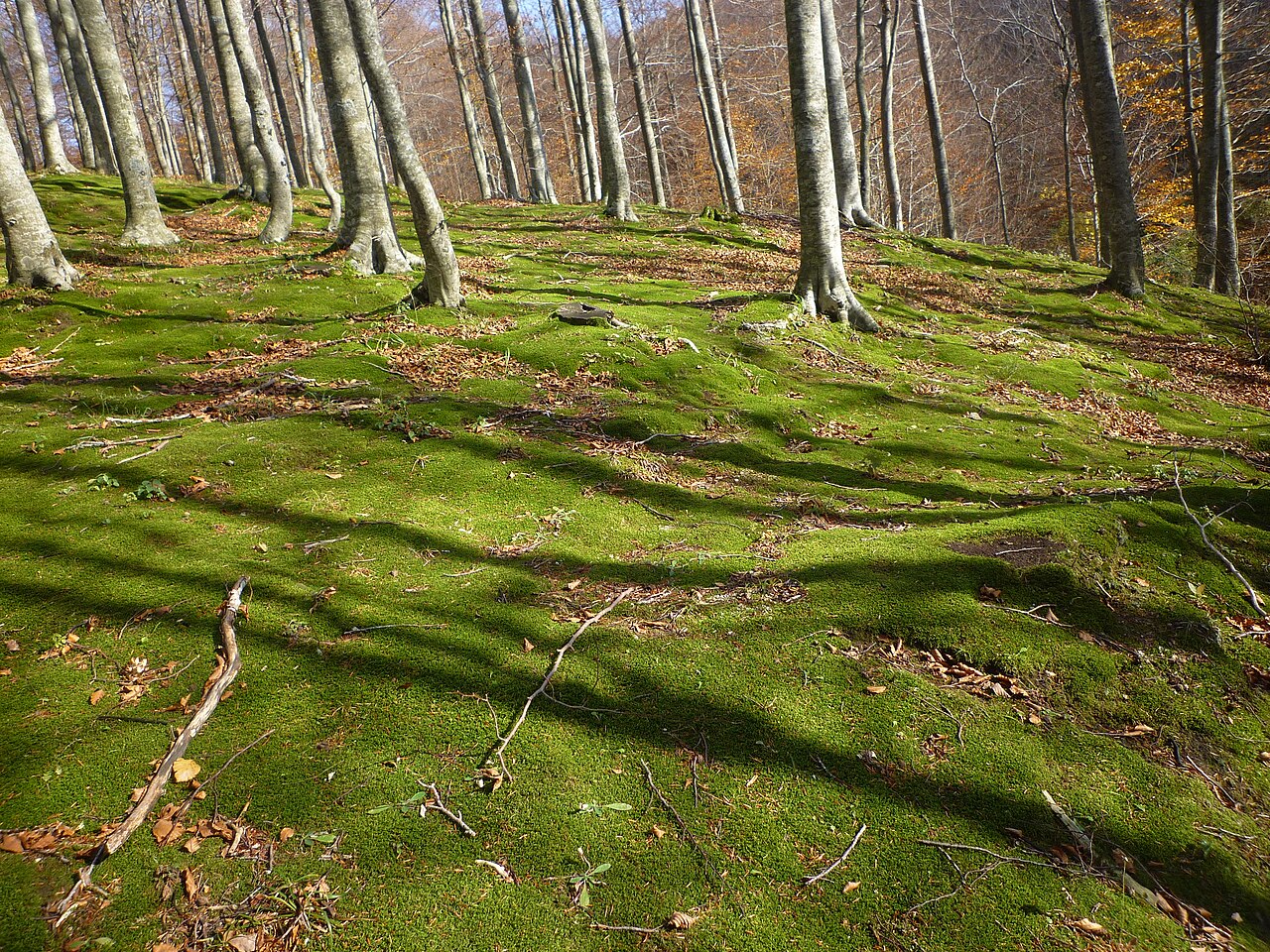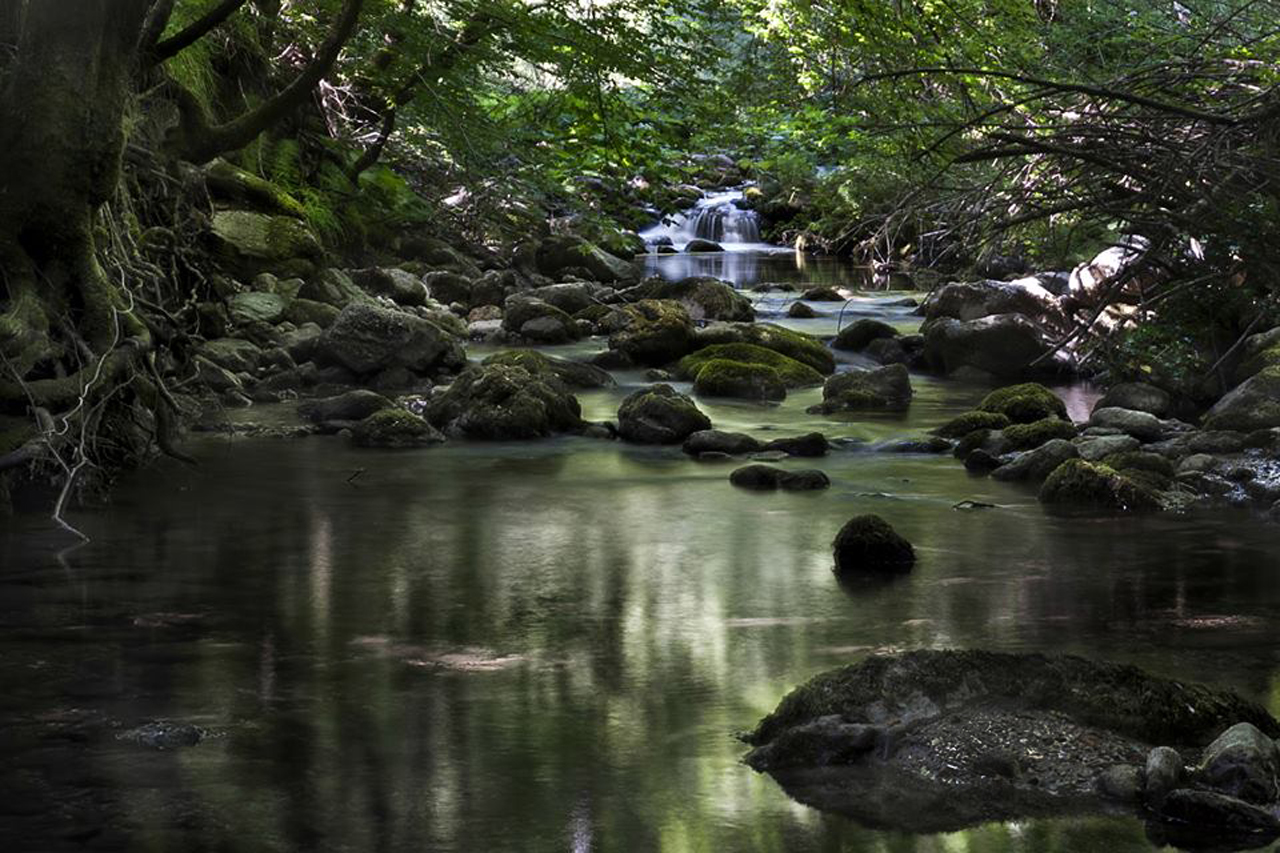Hidden in the mountains of Molise, Italy, the Guardiaregia-Campochiaro WWF Oasis surprised me during a spring adventure. This wild, sprawling 3,135-hectare reserve ranks among Italy’s largest and most untamed sanctuaries, offering a true escape for anyone craving nature or a bit of adventure.
The spectacular Quirino Canyons and San Nicola Falls steal the show here, with rare orchids blooming under ancient woods and dramatic karst formations. As I wandered through the wilderness, I started to understand why this place is so important for mountain biodiversity in the region. The mix of rugged canyons and delicate wildflowers just begs for a camera.

Image Source: Wikimedia Commons
I stayed at a cozy mountain retreat near the reserve, which made exploring much easier. If you’re thinking of visiting Guardiaregia, I’d say book a guided tour—local guides showed me hidden spots and wildlife I definitely would have missed, not to mention some of the best waterfall viewpoints.
Guardiaregia Reserve: A Haven for Nature Lovers
Guardiaregia-Campochiaro WWF Oasis in Molise stands out as one of Italy’s most impressive reserves, with over 3,000 hectares of pristine wilderness. It’s a hidden gem, packed with biodiversity, dramatic scenery, and the kind of experiences that reconnect you with nature.
Overview of Location and Accessibility
The reserve sits tucked in the Molise mountains of central Italy, and WWF manages it as one of their largest protected areas. Despite feeling remote, I found it surprisingly easy to get there. The reserve covers 3,135 hectares of untouched beauty.
You’ll need a car to reach the area comfortably since public transport doesn’t really cut it. Campobasso and Isernia are the closest big towns—each about an hour’s drive away.

Marked trails run all through the reserve, from easy strolls to more demanding hikes. The visitor center hands out maps, info on guided tours, and has cool exhibits about the local ecosystem. I always make a quick stop there to plan my day.
Unique Climatic and Geological Features
The reserve’s landscape is wild, shaped by impressive karst formations that create a weirdly unique microclimate. Walking through the canyons, I stared up at steep limestone cliffs and found caves carved out over thousands of years.
Water shapes everything here. You’ll find:
- Deep gorges cut by ancient rivers
- Waterfalls tumbling down rocky faces
- Underground springs popping out of the karst
- Habitats that swing from humid canyon floors to dry mountain slopes
All these features support a wild mix of plants and animals. The different elevations and microclimates mean Mediterranean and Alpine species actually grow side by side.
Seasonal Highlights and Best Times to Visit
Spring turns the reserve into a botanical wonderland. My April trip landed right in wildflower season, and rare orchids were popping up everywhere. The waterfalls roar as snow melts from higher up.

Summer brings warm days—great for hiking, but it can get hot by midday. I usually set out early to beat the heat and catch more wildlife.
In fall, the whole place glows with autumn colors, especially in October. The weather’s still nice for longer hikes.
Winter quiets everything down, and sometimes snow dusts the peaks. Some trails close, but the stark, sleepy landscape has a certain pull.
Exploring Majestic Waterfall Canyons
Guardiaregia Reserve boasts some of the most jaw-dropping waterfall canyons I’ve ever seen. These wild canyons slice through limestone, creating a landscape that shifts with the seasons.
Famous Canyon Trails and Scenic Routes
The Torrente Quirino trail is hands-down my favorite route through these majestic canyons. It follows a string of cascading waterfalls, some plunging over 30 meters into clear pools. Spring is the best for big water flow—thanks to melting snow.
I always enjoy the Sentiero delle Aquile (Eagle’s Path) for sweeping views over the whole canyon. It’s a moderate 6km hike, usually takes me around 4 hours, and links several great overlooks.
If you want something easier, the Guardiaregina Loop is a gentle 3km trail that leads to the smaller but still pretty Santa Maria falls. Signs along the way explain the geology and local wildlife.

Image Source: Wikimedia Commons
Tips for Safe and Rewarding Canyon Exploration
Check the weather before you go. I once had to bail when rain made the trails slick and risky. Flash floods can hit fast in these narrow canyons.
Wear proper shoes! I always bring waterproof hiking boots with solid ankle support. Some spots need you to cross shallow streams, so quick-drying socks and pants help.
Don’t forget:
- At least 2 liters of water per person
- High-energy snacks
- First aid kit
- Map or GPS (cell service is iffy)
- Layers (canyons can be chilly)
May-June and September-October usually offer the best weather and water levels. Summer can get crowded, while winter brings icy patches.
Photo-Worthy Spots and Secret Viewpoints
I always head for the “Three Sisters” cascade for photos. Early morning is magic—sunbeams and mist make rainbows. The stone arch above the middle fall frames pictures perfectly.
If you’re chasing sunset, try the hidden Falco Overlook. It’s a 20-minute detour, but the golden light over the canyon is worth it.
Behind the lower Quirino falls, the “Whispering Pool” grotto creates wild echoes and emerald water—great for photos. Follow the narrow trail marked with blue blazes to reach it.
The “Stone Garden” fascinates me with its weird rock shapes and rare ferns. I’ve spent ages here, just taking close-ups of the patterns.

Image Source: Tripadvisor
Rare Orchids and Botanical Wonders
Guardiaregia Reserve hosts an incredible variety of orchid species that thrive in its special microclimate. These flowers bloom all year, creating a colorful contrast to the waterfalls and canyons.
Signature Orchid Species Found Only Here
I learned that Guardiaregia Reserve shelters several orchid species you literally can’t find anywhere else. The Guardiaregia Lady Slipper (Cypripedium guardiaregiense) stands out with its pouch-shaped bloom and bright yellow streaks. It grows only on limestone ledges near the main waterfall.
The Mist Orchid (Epipactis nebulosa) is another gem. It loves the spray zones by the cascades, its translucent petals glowing in the morning sun.
One spring, I counted more than 35 orchid types in just a single square kilometer! The Canyon Ghost Orchid (Dendrophylax canyonensis) is the most photogenic—it seems to float on the rock, leafless and pale.

Image Source: Wikimedia Commons
Best Orchid Blooming Seasons
Orchid blooms start popping in late March. I saw the brightest colors in mid-April, especially the purple Dactylorhiza maculata near damp spots. Peak bloom usually runs from April 15 to May 20, when most species flower at once.
Summer (June-August) brings a second, quieter wave. The heat-loving Anacamptis orchids show off their red and pink spikes along the upper trails.
In fall, I found the rare Spiranthes spiralis twisting up in the eastern meadows. Bloom times shift a bit each year, depending on rain.
Guided Orchid Walks and Tours
The daily “Orchid Discovery” walks are a must. These two-hour tours kick off at 9am and 2pm from the visitor center, led by botanists who know all the secret spots. They even hand out magnifying glasses to check out the tiny details.
For hardcore fans, the “Photographer’s Orchid Tour” is worth booking ahead. You get early morning access and can use a tripod—perfect for capturing the best light.

Monthly workshops cover orchid conservation, and I once joined a citizen science project to help track blooming patterns. Kids love the “Junior Botanist” activities, where they learn to spot common species in hands-on ways.
Wildlife Encounters in Guardiaregia
Wildlife in Guardiaregia-Campochiaro Reserve always keeps me on my toes. Every visit brings a new surprise.
Noteworthy Mammals, Birds, and Amphibians
The elusive Marsican brown bear roams these woods, though I’ve only ever seen footprints. Early mornings, I’ve spotted wolf tracks along the trails. Wolves usually keep their distance, but their presence is thrilling.
Wild boars are everywhere—I hear them crashing through the brush all the time. Italian roe deer sometimes graze in open meadows around sunrise and sunset.
Birders will have a field day. I’ve watched golden eagles soaring over the cliffs, and peregrine falcons diving like rockets. The European bee-eater adds a splash of color in summer.
Streams here shelter spectacled salamanders and yellow-bellied toads, both signs of clean water.

Photographing Wildlife Responsibly
I always keep my distance and use a telephoto lens for wildlife shots. It’s better for the animals—and for my photos.
Early morning and evening are best for light and for spotting animals. My favorite sessions are right after sunrise, when the trails are quiet.
Wildlife photography gear I bring:
- Telephoto lens (200mm or more)
- Tripod
- Neutral clothes
- Binoculars for scouting
Never feed wildlife or try to lure them with food. I’ve seen firsthand how this messes with their behavior.
Some areas close during breeding seasons, so I check with rangers before heading out with my camera.

Sustainable Tourism and Conservation Efforts
Guardiaregia Reserve puts a lot of effort into conservation and sustainable tourism. They balance protecting the wild with letting visitors experience it.
Eco-Friendly Travel Tips for Visitors
When I visited, the reserve staff made it clear—stick to marked trails to protect orchids and fragile canyon habitats.
Spring and fall are my favorite times to visit: fewer people and perfect hiking weather. The waterfalls are at their best, too.
WWF-guided tours run on weekends, and the guides always share stories and facts I wouldn’t have known otherwise.
Bring a reusable water bottle and pack out all your trash. There are filtered water stations at the entrance and visitor center.
Since public transport is limited, carpooling with other travelers helps cut down your footprint.
Community Involvement in Conservation
Local people play a big part in protecting Guardiaregia’s wild side. Since 1997, the reserve has hired locals as guides and conservation staff.
I met a few who work on citizen science projects, tracking orchids and monitoring wildlife. Their knowledge runs deep—it’s been passed down for generations.
School groups from nearby villages come here to learn about conservation. These programs help raise future nature lovers.
The reserve teams up with local farmers who use sustainable methods in the buffer zones. I tasted some amazing organic produce at the visitor center café, all grown nearby.
Seasonal festivals celebrate the area’s natural heritage and help raise money for conservation. Visitors get a real taste of local culture while supporting the reserve.

